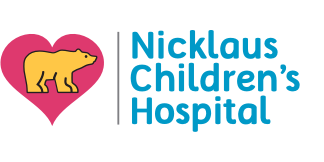- Parents Home
- Para Padres
- Allergy Center
- Asthma Center
- Cancer Center
- Diabetes Center
- Diseases & Conditions
- Doctors & Hospitals
- Emotions & Behavior
- First Aid & Safety
- Flu Center
- Food Allergy Center
- General Health
- Growth & Development
- Heart Health
- Homework Help Center
- Infections
- Newborn Center
- Nutrition & Fitness Center
- Play & Learn Center
- Pregnancy Center
- Q&A
- Recipes
- School & Family Life
- Sports Medicine Center
- Videos
- Kids Home
- Para Niños
- Asthma Center
- Cancer Center
- Diabetes Center
- Feelings
- Getting Help
- Health Problems
- Health Problems of Grown-Ups
- Heart Center
- Homework Center
- How the Body Works
- Illnesses & Injuries
- Kids' Medical Dictionary
- Movies & More
- Nutrition & Fitness Center
- Puberty & Growing Up
- Q&A
- Recipes & Cooking
- Relax & Unwind Center
- Stay Safe Center
- Staying Healthy
- Staying Safe
- Videos
- Teens Home
- Para Adolescentes
- Asthma Center
- Be Your Best Self Center
- Cancer Center
- Diabetes Center
- Diseases & Conditions
- Drugs & Alcohol
- Expert Answers (Q&A)
- Flu Center
- Homework Help Center
- Infections
- Managing Your Medical Care
- Managing Your Weight
- Nutrition & Fitness Center
- Recipes
- Safety & First Aid
- School & Work
- Sports Center
- Stress & Coping Center
- Videos
- Your Body
- Your Mind
A to Z: Ventricular Septal Defect (VSD)
May also be called: VSD
A ventricular septal defect (VSD) — sometimes referred to as a hole in the heart — is a type of congenital heart defect in which there is an abnormal opening in the dividing wall between the main pumping chambers of the heart (the ventricles).
More to Know
The heart has four chambers: The two lower pumping chambers (the ventricles) and the two upper filling chambers (the atria). The right ventricle pumps blood to the lungs to be enriched with oxygen, and the left ventricle pumps oxygen-rich blood out to the rest of the body. The two ventricles are separated by a shared wall, called the ventricular septum. Kids with a VSD are born with an opening in this wall that allows oxygen-rich and oxygen-poor blood to mix. The blood flowing through the hole creates an extra noise, known as a heart murmur, that can be heard when a doctor listens to the heart with a stethoscope.
Treatment for a VSD depends on the child's age and the size, location, and severity of the defect. Often, small defects cause no symptoms and may eventually close on their own. Medium to large VSDs can cause babies to breathe rapidly; gain weight slowly; and sweat, cry, or get tired while attempting to feed. These signs generally indicate that the VSD will not close by itself, and cardiac surgery may be needed to repair the defect.
Keep in Mind
In most kids, a small defect will close on its own. A medium to large VSD that's not treated can lead to heart failure, but VSDs can be repaired through surgery or cardiac catheterization. After healing from an operation to repair the defect, a child with a VSD should have no further symptoms or problems.
All A to Z dictionary entries are regularly reviewed by KidsHealth medical experts.

© 1995- The Nemours Foundation. KidsHealth® is a registered trademark of The Nemours Foundation. All rights reserved.
Images sourced by The Nemours Foundation and Getty Images.

